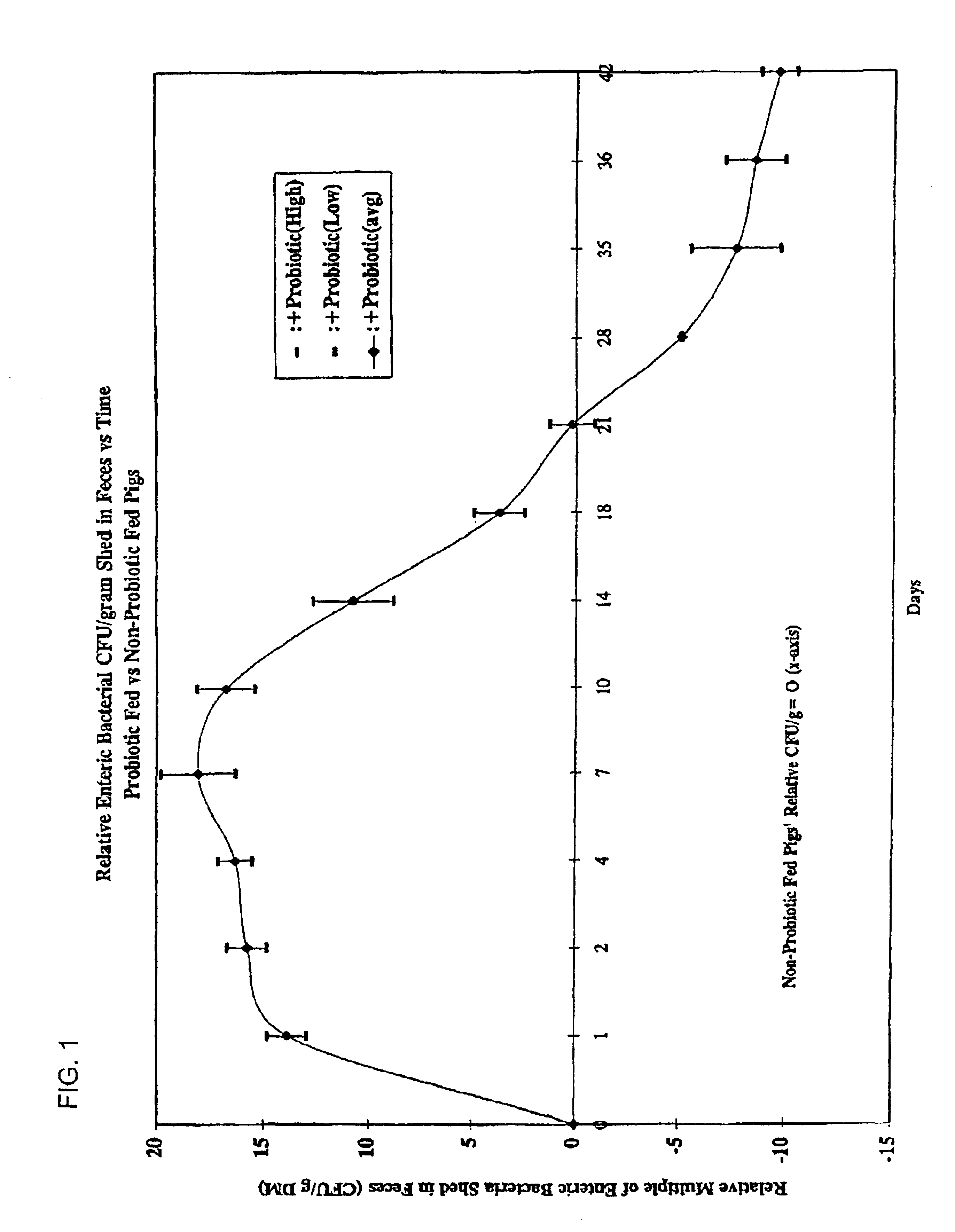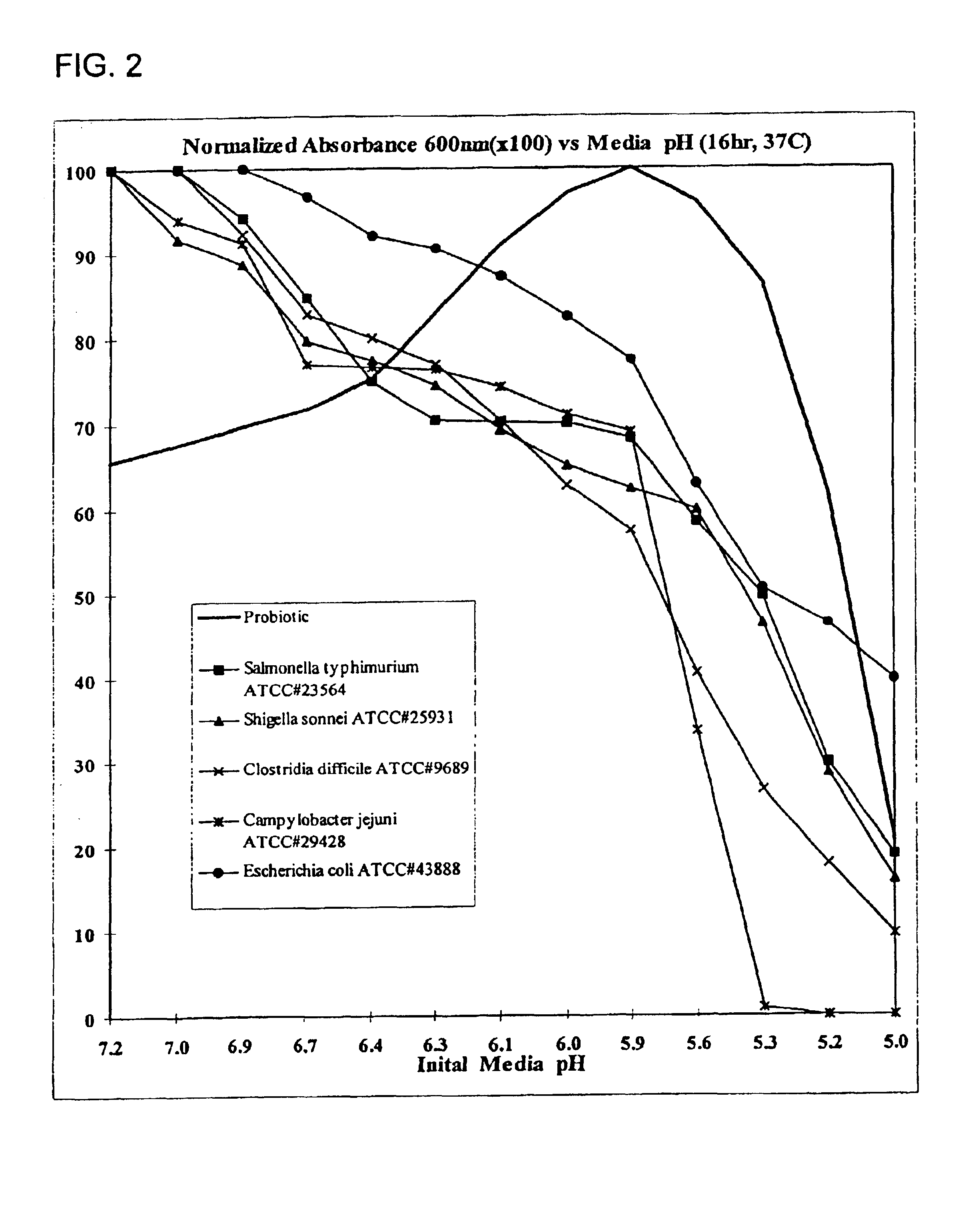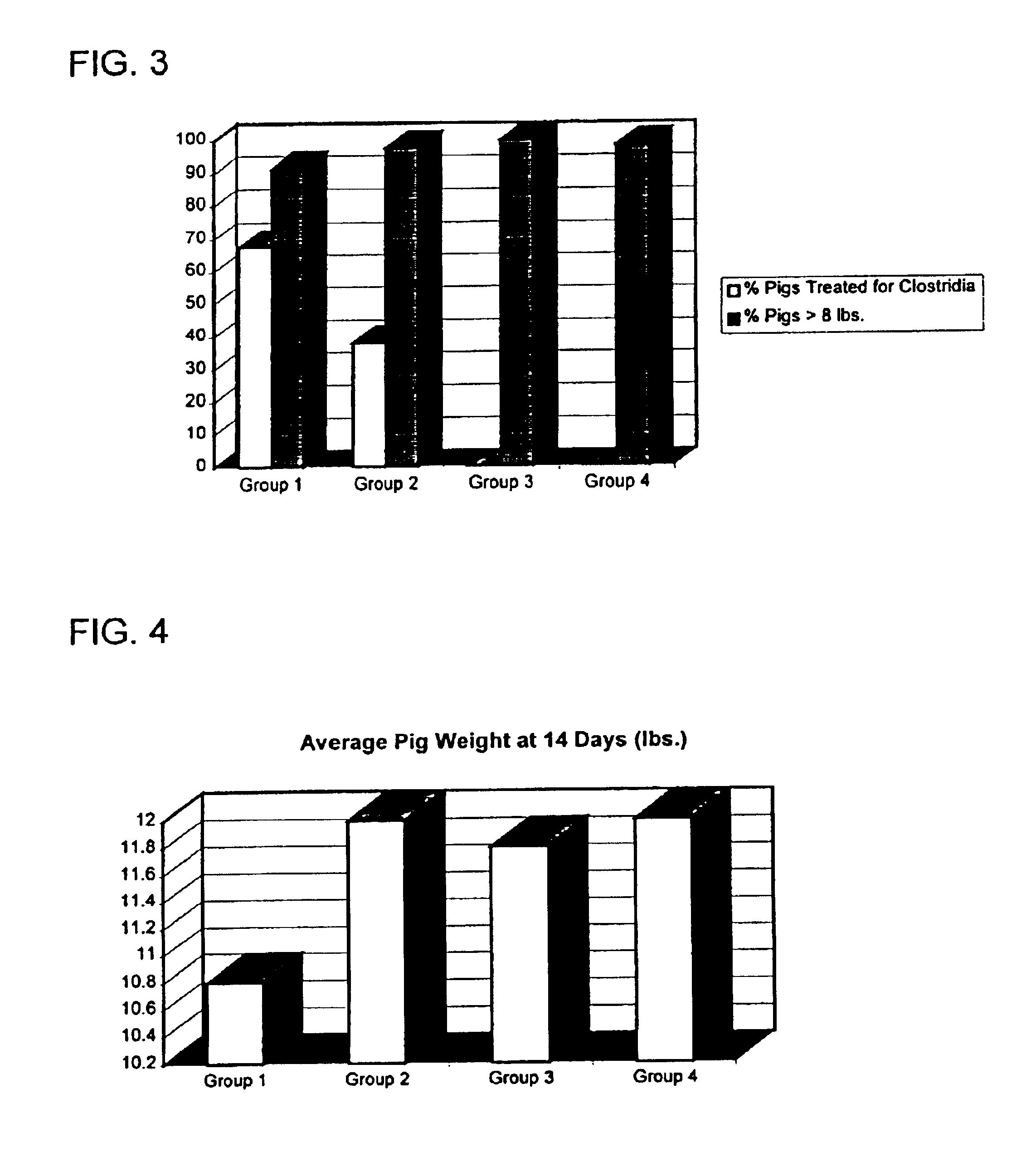Probiotic mixture intended for monogastric animals to control intestinal flora populations
a technology of probiotics and monogastric animals, applied in the field of probiotic mixtures, can solve the problems of poor lactose utilization rate of enterobacteriaceae, in general, and achieve the effect of enhancing efficacy
- Summary
- Abstract
- Description
- Claims
- Application Information
AI Technical Summary
Benefits of technology
Problems solved by technology
Method used
Image
Examples
experiment 1
The effect of the probiotic mixture on the shedding of enteric bacteria (such as Gram-negative bacilli) by pigs from 50 lbs. market weight was the subject of a trial. Nine hundred, fifty (950) 50 lb. pigs were fed a control ration consisting of a commercially accepted swine ration. Nine hundred, fifty (950) 50 lb. pigs were fed the control ration supplemented with 2 lbs. per ton of the mixture of probiotics identified above. Manure was randomly collected from 5 animals from each group, composited, and analyzed to determine the amount of enteric bacteria shed and the feed utilization of the animals.
TABLE 1Analyzed values of the manure (dry matter basis) of 50 lb. to 250 lb. pigscomparing control diet and diet including mixture of probioticsDay 100Day 100Day 100Day 1Day 1“250“250“25050 lb. pig50 lb. piglb. pig”lb. pig”lb. pigControlProbioticControlControlProbioticAnalysisFecesFecesFecesFecesFeces% Starch62.795.013.68% Calcium0.541.951.10%0.372.642.25Phosphorus%0.121.131.10MagnesiumpH6...
experiment 2
A similar trial was conducted on 20 sows that were fed a commercially acceptable swine ration as a control ration. The treated group of 9 sows was fed the control ration supplemented with 2 lbs. per ton of the probiotic mixture identified above.
TABLE 3Analyzed values of the manure (dry matter basis) of sows comparingcontrol diet and diet including mixture of probiotics for three weeks priorto samplingFarrowingFarrowingFarrowingControlProbioticAnalysisFeedFecesFeces% Moisture0.00.000.00% Dry Matter100.00100.00100.00% Crude Protein21.2320.1219.19% Starch45.712.281.75% Calcium1.526.935.91% Phosphorus1.124.714.19% Magnesium0.221.121.05pH6.37.36.8Enteric CFU / gN / A84,200,0006,910,000
The data in Table 3 show again the marked decrease in the amount of enteric bacteria shed in the manure of animals following three-weeks of treatment with the mixture of probiotics. Less starch, protein, and minerals are in the feces of the treated animals, demonstrating enhanced feed utilization. Also, the pH ...
experiment 3
As indicated in Tables 1 and 3, there is an initial increase in the amounts of enteric bacteria shed by animals that have been administered the mixture of probiotics of the present invention, followed sometime later by a reduction in the amount of such bacteria being shed by the treated animals relative to control animals. The amount of enteric bacteria shed over time was measured and the results are presented in FIG. 1. The data in FIG. 1 were compiled from swine trials comparing pigs fed a control diet with pigs fed the control diet supplemented with the mixture of probiotics of the present invention. The enteric bacteria shed by the control pigs is represented in the figure by the baseline at 0. The data show that there is an initial, almost immediate increase in enteric bacterial shedding which peaks at about 6 to 8 days, followed by a generally linear decrease to about 28 days and a continuing, though less steep, decrease thereafter. The probiotic mixture is observed to cause a...
PUM
| Property | Measurement | Unit |
|---|---|---|
| temperatures | aaaaa | aaaaa |
| pH | aaaaa | aaaaa |
| pH | aaaaa | aaaaa |
Abstract
Description
Claims
Application Information
 Login to View More
Login to View More - R&D
- Intellectual Property
- Life Sciences
- Materials
- Tech Scout
- Unparalleled Data Quality
- Higher Quality Content
- 60% Fewer Hallucinations
Browse by: Latest US Patents, China's latest patents, Technical Efficacy Thesaurus, Application Domain, Technology Topic, Popular Technical Reports.
© 2025 PatSnap. All rights reserved.Legal|Privacy policy|Modern Slavery Act Transparency Statement|Sitemap|About US| Contact US: help@patsnap.com



